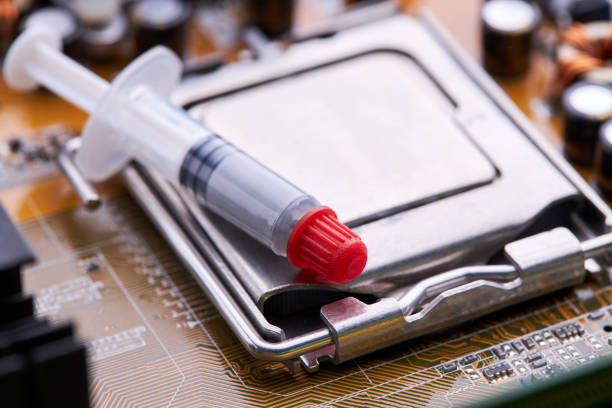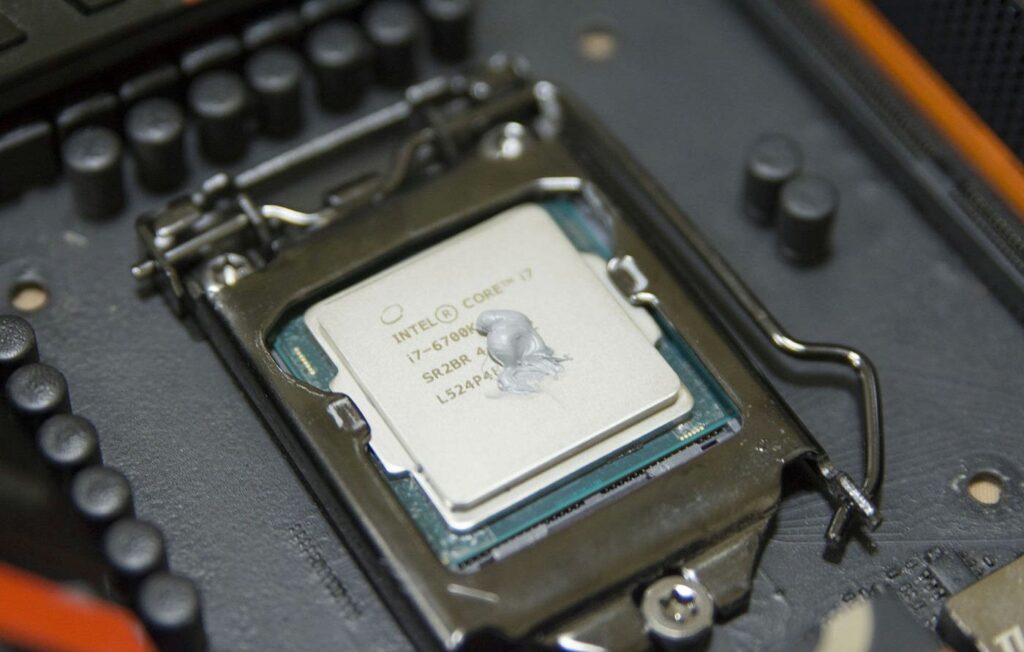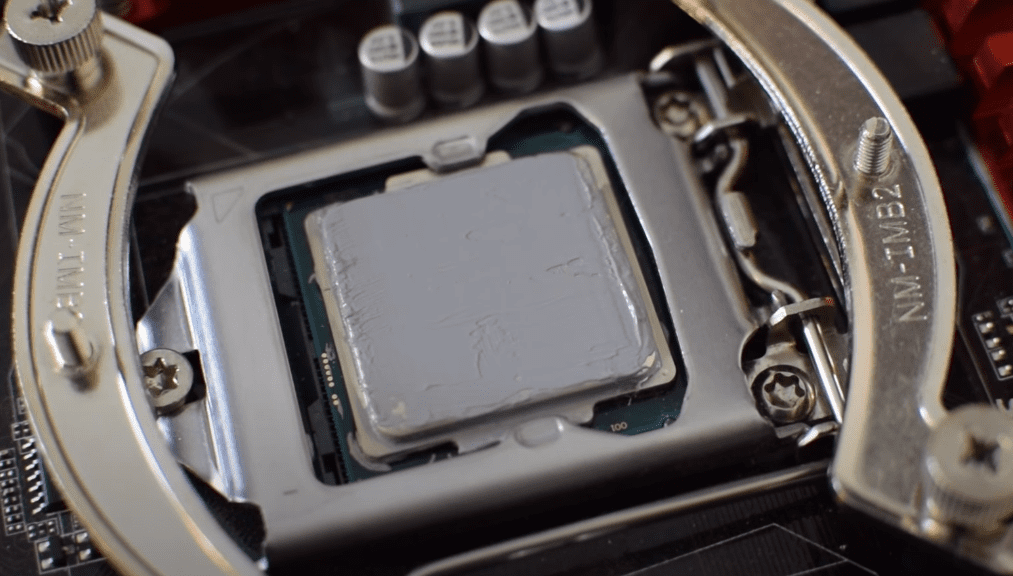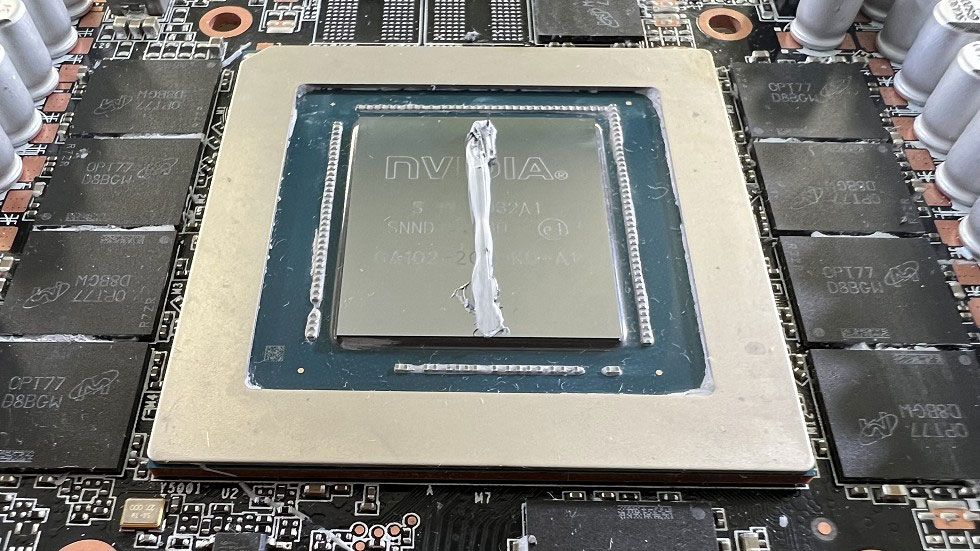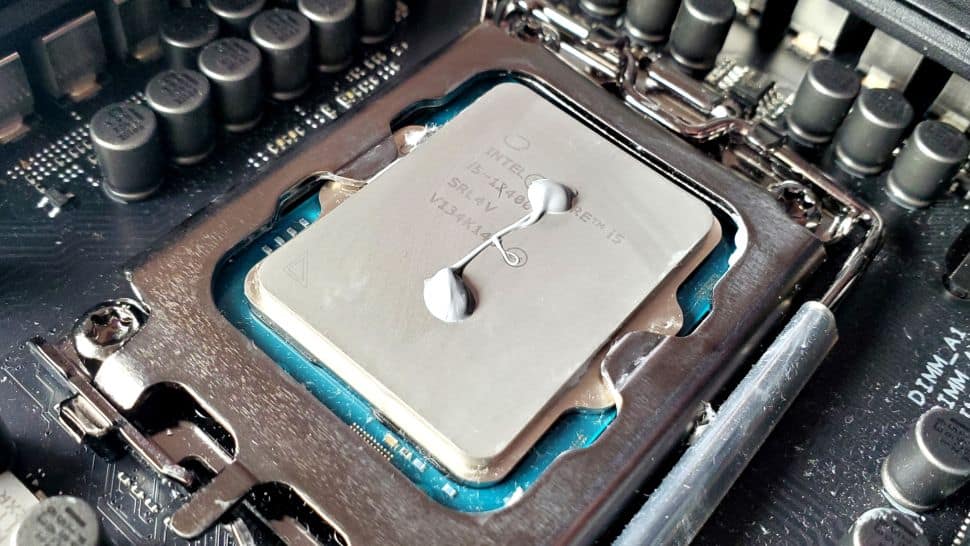When it comes to keeping your computer running at optimal performance, thermal paste is often the unsung hero. This unassuming substance plays a crucial role in preventing overheating and ensuring your CPU runs smoothly. But not all thermal pastes are created equal and improper application can lead to serious issues. In this guide, we’ll cover the importance of properly applying thermal paste to your CPU and the steps to ensure you get the best results. From selecting the right thermal paste to understanding the proper application techniques, we’ve got you covered. Let’s dive in and learn how to keep your computer cool and running efficiently.
Thermal paste is an essential component of a computer cooling system. It is a thin layer of a substance that sits between the CPU and the heatsink to help transfer heat away from the CPU and prevent overheating. It helps to fill the microscopic air gaps between the CPU and the heatsink and increases the contact surface area. Proper application of thermal paste is crucial for the efficient and effective operation of the cooling system. Improper application or using the wrong type of thermal paste can lead to overheating, system instability, and even permanent damage to your CPU. In this article, we’ll discuss the importance of properly applying thermal paste to your CPU and the steps to ensure you get the best results.
There are several techniques for applying thermal paste, including:
- The “pea method”: This is the most common method, it involves placing a small pea-sized dot of thermal paste directly in the center of the CPU and spreading it evenly with the heatsink
- The “spread method”: This method involves spreading a thin layer of thermal paste across the entire surface of the CPU. This method can help to ensure even coverage and eliminate the possibility of air bubbles.
- The “line method”: This method involves placing a thin line of thermal paste directly on the center of the CPU. This method can also help to ensure even coverage and eliminate the possibility of air bubbles.
- The “dot method”: This method involves placing small dots of thermal paste in specific locations on the CPU, usually in the corners. This method can also help to ensure even coverage and eliminate the possibility of air bubbles.
- Pre-applied thermal paste: Some CPUs and heatsinks come with pre-applied thermal paste, in this case, you only need to ensure that the heatsink is properly installed and secured.
It’s worth noting that different CPUs and Heatsink have different surfaces and shapes, it’s recommended to consult the instructions for the specific product you are using for best results. Also, it’s important to use only a small amount of thermal paste, as too much can impede heat transfer.
Here are the steps for properly applying thermal paste to a CPU:
1. Prepare your work area: Gather all the necessary tools, including thermal paste, a small flat-head screwdriver, and a lint-free cloth. Clean your work area and make sure that it’s free of dust and debris.
2. Clean the CPU and heatsink: Use isopropyl alcohol and a lint-free cloth to clean the surface of the CPU and heatsink to remove any dust or debris.
3. Apply the thermal paste: Depending on the technique you choose, apply the thermal paste to the CPU in the desired method.
4. Pea method: Place a small pea-sized dot of thermal paste directly in the center of the CPU.
5. Spread method: Spread a thin layer of thermal paste across the entire surface of the CPU.
6. Line method: Place a thin line of thermal paste directly on the center of the CPU
7. Dot method: Place small dots of thermal paste in specific locations on the CPU, usually in the corners.
8. Pre-applied thermal paste: If your CPU and Heatsink come with pre-applied thermal paste, you can skip this step.
9. Place the heatsink: Carefully place the heatsink on top of the CPU, making sure to align it correctly. Gently press down on the center of the heatsink and then slowly rotate it a quarter turn in each direction to evenly spread the thermal paste across the surface of the CPU.
10. Secure the heatsink: Use the mounting bracket or clips to secure the heatsink in place. Make sure that it is securely attached and not wobbling.
11. Boot up and check the temperature: Boot up your computer and check the CPU temperature to ensure that the thermal paste is applied correctly and the cooling system is working properly.
Thermal paste is a consumable item, and it’s recommended to check and reapply the thermal paste every few years or when changing the cooling system to ensure optimal performance.
Applying the thermal paste to a CPU is important for several reasons:
- Heat dissipation: Thermal paste helps to transfer heat away from the CPU to the heatsink. The heatsink then dissipates the heat into the surrounding air or liquid. This is crucial for preventing overheating and ensuring that the CPU runs at optimal temperatures.
- Improving thermal conductivity: Thermal paste is designed to improve the thermal conductivity between the CPU and the heatsink. It fills any microscopic air gaps that may be present and increase the contact surface area, allowing heat to be transferred more efficiently.
- Preventing damage: Overheating can cause permanent damage to a CPU, such as melting or warping. Applying thermal paste can help to prevent this by ensuring that the CPU runs at safe temperatures.
- Enhancing performance: Keeping the CPU cool allows it to operate at its full potential and can enhance overall system performance.
- Improving the lifespan: Proper application of thermal paste helps to prolong the lifespan of the CPU by reducing the stress on the processor due to heat, also it helps to prolong the lifespan of the cooling system itself.
In conclusion, properly applying thermal paste to your CPU is an essential step in ensuring that your computer runs at optimal performance and preventing overheating. It helps to transfer heat away from the CPU and prevent damage to the processor. Choosing the right thermal paste and applying it correctly can also prolong the lifespan of the CPU and the cooling system. Whether you’re a first-time builder or a seasoned pro, taking the time to properly apply thermal paste can make a big difference in your computer’s performance and longevity. Make sure to consult the instructions of your specific CPU and Heatsink and use a small amount of thermal paste to get the best results.
Keep your CPU cool, and keep your computer running smoothly!

